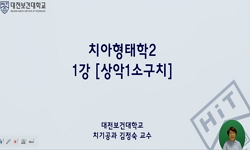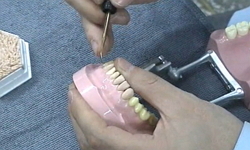Background: The sacrococcygeal morphology of Arabs and Europeans has been studied using computed tomography (CT) or magnetic resonance imaging to determine the cause of coccydynia. Studies have suggested differences in sacrococcygeal morphology among ...
http://chineseinput.net/에서 pinyin(병음)방식으로 중국어를 변환할 수 있습니다.
변환된 중국어를 복사하여 사용하시면 됩니다.
- 中文 을 입력하시려면 zhongwen을 입력하시고 space를누르시면됩니다.
- 北京 을 입력하시려면 beijing을 입력하시고 space를 누르시면 됩니다.
https://www.riss.kr/link?id=A103555349
-
저자
Min Geun Yoon (Cheju Halla General Hospital) ; Myung-Sang Moon (Cheju Halla General Hospital) ; Bong Keun Park (Cheju Halla General Hospital) ; Hohyoung Lee (Cheju Halla General Hospital) ; Dong-Hyeon Kim (Cheju Halla General Hospital)

- 발행기관
- 학술지명
- 권호사항
-
발행연도
2016
-
작성언어
English
- 주제어
-
등재정보
KCI등재,SCOPUS,SCIE
-
자료형태
학술저널
- 발행기관 URL
-
수록면
412-419(8쪽)
-
KCI 피인용횟수
1
- 제공처
-
0
상세조회 -
0
다운로드
부가정보
다국어 초록 (Multilingual Abstract)
Background: The sacrococcygeal morphology of Arabs and Europeans has been studied using computed tomography (CT) or magnetic resonance imaging to determine the cause of coccydynia. Studies have suggested differences in sacrococcygeal morphology among ethnic groups. However, there are no data on the sacrococcygeal anatomy of Koreans.
Methods: We conducted a retrospective analysis of 606 pelvic CT scans that were taken at Cheju Halla General Hospital between 2008 and 2014. Fractures of the sacrum or coccyx were excluded. Differences in the sacrococcygeal morphology among age groups stratified by decade of life and between genders were analyzed using sagittal plane pelvic CT scans. The morphological parameters studied were the sacral and coccygeal curved indexes, sacrococcygeal angle, intercoccygeal angle, coccygeal type, coccygeal segmental number, and sacrococcygeal fusion.
Results: The average sacral and coccygeal curved indexes were 6.15 and 7.41, respectively. The average sacrococcygeal and intercoccygeal angles were 110° and 49°, respectively. Type II coccyx was most common, and the rate of sacrococcygeal fusion was 34%. There was a moderate positive correlation between age and the sacral curved index (r = 0.493, p = 0.000) and a weak negative correlation between age and the coccyx curved index (r = –0.257, p = 0.000). There was a weak negative correlation between age and the intercoccygeal angle (r = –0.187, p = 0.000). The average intercoccygeal angle in males and females was 53.9° and 44.7°, respectively.
Conclusions: The sacrum tended to be more curved and the coccyx straighter with age. The coccyx was straighter in females than males. Knowledge of the sacrococcygeal anatomy of Koreans will promote better understanding of anatomical differences among ethnicities and future studies on coccydynia.
참고문헌 (Reference)
1 Saluja PG, "The incidence of ossification of the sacrococcygeal joint" 156 : 11-15, 1988
2 Karadimas EJ, "Surgical treatment of coccygodynia : an analytic review of the literature" 20 (20): 698-705, 2011
3 Maigne JY, "Standardized radiologic protocol for the study of common coccygodynia and characteristics of the lesions observed in the sitting position : clinical elements differentiating luxation, hypermobility, and normal mobility" 21 (21): 2588-2593, 1996
4 Mouhsine E, "Posttraumatic coccygeal instability" 6 (6): 544-549, 2006
5 Woon JT, "Magnetic resonance imaging morphology and morphometry of the coccyx in coccydynia" 38 (38): E1437-E1445, 2013
6 Maigne JY, "Magnetic resonance imaging findings in the painful adult coccyx" 21 (21): 2097-2104, 2012
7 Kerimoglu U, "Intercoccygeal angle and type of coccyx in asymptomatic patients" 29 (29): 683-687, 2007
8 Maigne JY, "Instability of the coccyx in coccydynia" 82 (82): 1038-1041, 2000
9 Postacchini F, "Idiopathic coccygodynia : analysis of fifty-one operative cases and a radiographic study of the normal coccyx" 65 (65): 1116-1124, 1983
10 Gray H, "Gray’s anatomy" Churchill-Livingstone 1980
1 Saluja PG, "The incidence of ossification of the sacrococcygeal joint" 156 : 11-15, 1988
2 Karadimas EJ, "Surgical treatment of coccygodynia : an analytic review of the literature" 20 (20): 698-705, 2011
3 Maigne JY, "Standardized radiologic protocol for the study of common coccygodynia and characteristics of the lesions observed in the sitting position : clinical elements differentiating luxation, hypermobility, and normal mobility" 21 (21): 2588-2593, 1996
4 Mouhsine E, "Posttraumatic coccygeal instability" 6 (6): 544-549, 2006
5 Woon JT, "Magnetic resonance imaging morphology and morphometry of the coccyx in coccydynia" 38 (38): E1437-E1445, 2013
6 Maigne JY, "Magnetic resonance imaging findings in the painful adult coccyx" 21 (21): 2097-2104, 2012
7 Kerimoglu U, "Intercoccygeal angle and type of coccyx in asymptomatic patients" 29 (29): 683-687, 2007
8 Maigne JY, "Instability of the coccyx in coccydynia" 82 (82): 1038-1041, 2000
9 Postacchini F, "Idiopathic coccygodynia : analysis of fifty-one operative cases and a radiographic study of the normal coccyx" 65 (65): 1116-1124, 1983
10 Gray H, "Gray’s anatomy" Churchill-Livingstone 1980
11 Tague RG, "Fusion of coccyx to sacrum in humans : prevalence, correlates, and effect on pelvic size, with obstetrical and evolutionary implications" 145 (145): 426-437, 2011
12 Breathnach AS, "Frazer’s anatomy of the human skeleton" J & A Churchill 1965
13 Przybylski P, "Evaluation of coccygeal bone variability, intercoccygeal and lumbosacral angles in asymptomatic patients in multislice computed tomography" 88 (88): 204-211, 2013
14 Marwan YA, "Computed tomography-based morphologic and morphometric features of the coccyx among Arab adults" 39 (39): E1210-E1219, 2014
15 Fogel GR, "Coccygodynia : evaluation and management" 12 (12): 49-54, 2004
16 Patijn J, "Coccygodynia" 10 (10): 554-559, 2010
17 Balain B, "Coccygectomy for coccydynia: case series and review of literature" 31 (31): E414-E420, 2006
18 Lirette LS, "Coccydynia : an overview of the anatomy, etiology, and treatment of coccyx pain" 14 (14): 84-87, 2014
19 Nathan ST, "Coccydynia : a review of pathoanatomy, aetiology, treatment and outcome" 92 (92): 1622-1627, 2010
20 Moore KL, "Clinically oriented anatomy" Williams & Wilkins 1985
21 Kim NH, "Clinical and radiological differences between traumatic and idiopathic coccygodynia" 40 (40): 215-220, 1999
22 Woon JT, "Clinical anatomy of the coccyx : a systematic review" 25 (25): 158-167, 2012
23 Maigne JY, "Causes and mechanisms of common coccydynia : role of body mass index and coccygeal trauma" 25 (25): 3072-3079, 2000
24 Woon JT, "CT morphology and morphometry of the normal adult coccyx" 22 (22): 863-870, 2013
동일학술지(권/호) 다른 논문
-
- 대한정형외과학회
- Sang-Hun Ko
- 2016
- KCI등재,SCOPUS,SCIE
-
Intramedullary Nailing for Pathological Fractures of the Proximal Humerus
- 대한정형외과학회
- 최은석
- 2016
- KCI등재,SCOPUS,SCIE
-
Measurement of Clavicle Fracture Shortening Using Computed Tomography and Chest Radiography
- 대한정형외과학회
- Reza Omid
- 2016
- KCI등재,SCOPUS,SCIE
-
Arthroscopic Excision of an Intraarticular Osteoid Osteoma in the Distal Femur
- 대한정형외과학회
- Suk Kang
- 2016
- KCI등재,SCOPUS,SCIE
분석정보
인용정보 인용지수 설명보기
학술지 이력
| 연월일 | 이력구분 | 이력상세 | 등재구분 |
|---|---|---|---|
| 2024 | 평가예정 | 해외DB학술지평가 신청대상 (해외등재 학술지 평가) | |
| 2021-01-01 | 평가 | 등재학술지 선정 (해외등재 학술지 평가) |  |
| 2020-12-01 | 평가 | 등재 탈락 (해외등재 학술지 평가) | |
| 2020-04-14 | 학회명변경 | 영문명 : 미등록 -> The Korean Orthopaedic Association |  |
| 2013-10-01 | 평가 | 등재학술지 선정 (기타) |  |
| 2010-01-01 | 평가 | SCOPUS 등재 (신규평가) |  |
학술지 인용정보
| 기준연도 | WOS-KCI 통합IF(2년) | KCIF(2년) | KCIF(3년) |
|---|---|---|---|
| 2016 | 0.06 | 0.06 | 0.07 |
| KCIF(4년) | KCIF(5년) | 중심성지수(3년) | 즉시성지수 |
| 0.07 | 0.1 | 0.346 | 0.04 |






 KCI
KCI






